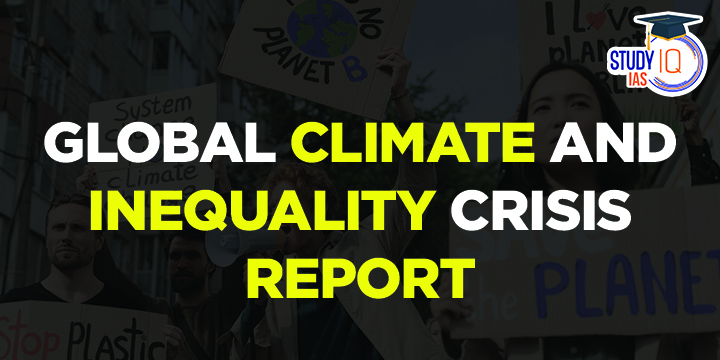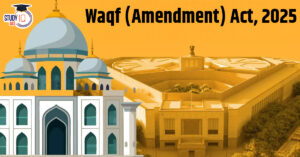Table of Contents
Global Climate and Inequality Crisis News
- According to the report, there are almost 350 million children across Asia, including 222 million in India, who are gripped by both grinding poverty and climate disaster.
- It has highlighted that Cambodia tops the list of Asian countries most likely to face the “double threat” of poverty and climate disaster with 72% of children in the country affected, followed by Myanmar (64%) and Afghanistan (57%).
- Nearly 351.9 million children in India are estimated to be affected by at least one extreme climate event a year with some at particular risk because of living in poverty.
- The report has warned that if the climate and inequality crises are not addressed with urgency, the frequency and severity of humanitarian and cost of living crises are set to soar.
Global Climate and Inequality Crisis Highlights
- India: More than 222 million or 51% of children in India face ‘double threat’ of climate disaster and poverty.
- Global scenario: Nearly 774 million children fall into this high-risk group with higher-income countries also not immune from this double threat.
- Higher income countries: The report found that 121 million children facing both climate disaster and poverty live in higher income countries including U. S. or U. K.
- Interlinked: The climate emergency and issues of inequality are deeply connected, and cannot be dealt with in isolation from each other.
- Impact of climate change: The disastrous calamities such as floods in Assam, Kerala and cyclone prone Odisha have hit the marginalised communities the hardest, leaving thousands of people hungry and homeless.
Global Climate and Inequality Crisis Major Issues
- Vicious cycle: Crises like these push people even deeper into grinding poverty and leave millions of people even more vulnerable to the next flood or drought.
- Skewed scenario: Nearly 76 % of global wealth is owned by the wealthiest 10% of people globally while the carbon emissions of the world’s wealthiest 1% are double those of the poorest 50%.
- Climate finance: There is a $ 9.10 gap in climate financing adaptation per person per year in the nine countries where children are most at risk of climate impacts.
- Fuel burden: Governments spend $ 5.9 trillion on fossil fuel subsidies each year
- Funding for SDG: Nearly $4.2 trillion is needed per year to achieve the Sustainable Development Goals in lower income countries.

Global Climate and Inequality Crisis: What can be Done
- Need for unified approach: Nations can double down on climate and inequality through a unified approach to maximise potential synergies and reduce emissions of greenhouse gases at the pace required to limit global heating to 1.5ºC.
- Investment: Countries should invest in children and their rights to health, nutrition, education, and protection from violence and poverty for healthy economies and societies.
- Accountability: Global leaders should deliver justice at the climate and inequality frontlines to children and communities most affected – through adapting essential services, supporting children experiencing losses and damage as a result of the climate emergency.
- Realistic approach: There is need to listen to children and act on their demands, ensuring they have meaningful say over decisions that affect their lives and the planet.
- Equitable support: Consensus should be developed to shift finance and power globally, so that lower income and climate-vulnerable countries that have done the least to contribute to the global climate emergency have the finance they need to deliver and have meaningful influence over the rules that govern the global financing system.



 Daily Quiz 19 April 2025
Daily Quiz 19 April 2025
 Vehicle-to-Grid (V2G) Technology and its...
Vehicle-to-Grid (V2G) Technology and its...
 Waqf Act (Amendment) 2025: Key Highlight...
Waqf Act (Amendment) 2025: Key Highlight...





















